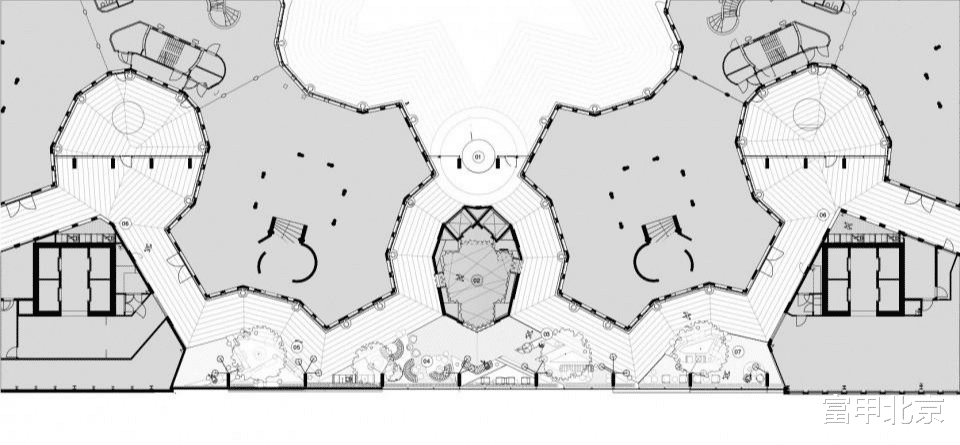由Concrete事务所设计的动态中庭,使位于荷兰阿姆斯特丹商业区的办公园区 —— Tripolis Park,重新焕发了活力。办公园区内包括了不朽的Tripolis建筑群,该建筑群是建筑师Aldo van Eyck的晚期杰作之一,此外还包含了由MVRDV设计的横跨园区内建筑群的全新大型“地景建筑”。
Tripolis Park, an office campus in the business district of Amsterdam, The Netherlands, has been revitalized with a dynamic atrium design by Concrete. The campus includes the monumental Tripolis complex – one of the late masterpieces of architect Aldo van Eyck – and a new massive landscraper by MVRDV that spans across the Van Eyck buildings.
▼项目概览,overall of the project© wouter van der sar / concrete
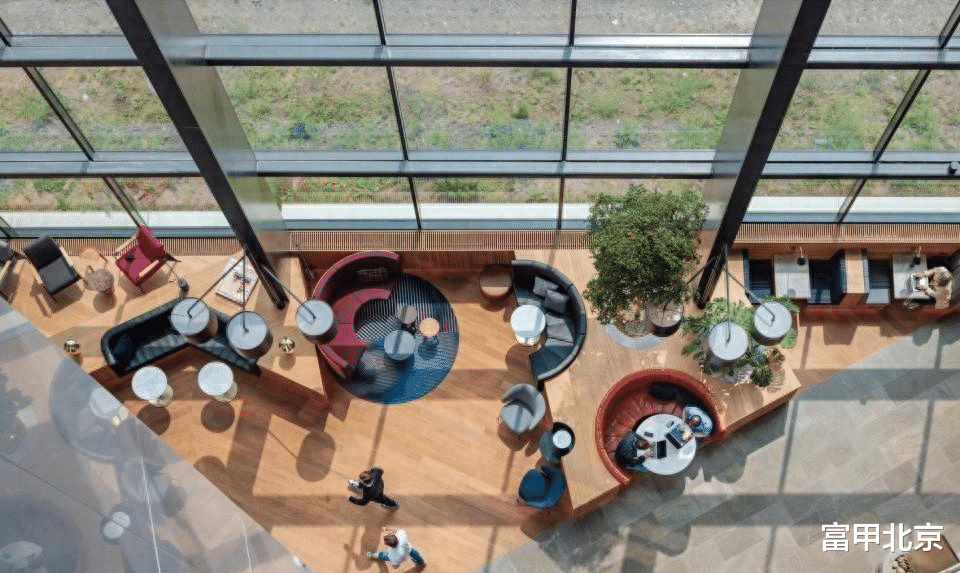
中庭:中间空间Atrium: The In Between Space
中庭作为一个“中间空间”,位于Aldo van Eyck棱角分明且富有趣味的建筑和MVRDV新设计建筑的七层高玻璃幕墙之间。这座“地景建筑”跨越了Van Eyck的建筑群,同时将其与A10高速公路隔离开。
The atrium serves as an ‘in-between space,’ located between the angular, playful architecture of Aldo van Eyck and the seven-story-high glass façade of MVRDV’s newly constructed landscraper, which spans the Van Eyck buildings and shields them from the A10 highway.
▼接待台,reception desk© wouter van der sar / concrete

Concrete的主要挑战是将人性化尺度重新引入这一宽广高耸的空间,柔化主要由坚硬的建筑材料主导的空间氛围。中庭的设计旨在为MVRDV的地景建筑和Van Eyck建筑中的办公空间提供一座公共的大堂空间。
Concrete’s primary challenge was to reintroduce a human scale to this vast, towering space, which is dominated by the hard materials of the architecture.The program for the atrium is a public lobby space serving the offices located in the landscraper and the Van Eyck buildings alike.
▼宽广高耸的空间感,the vast, towering space© wouter van der sar / concrete
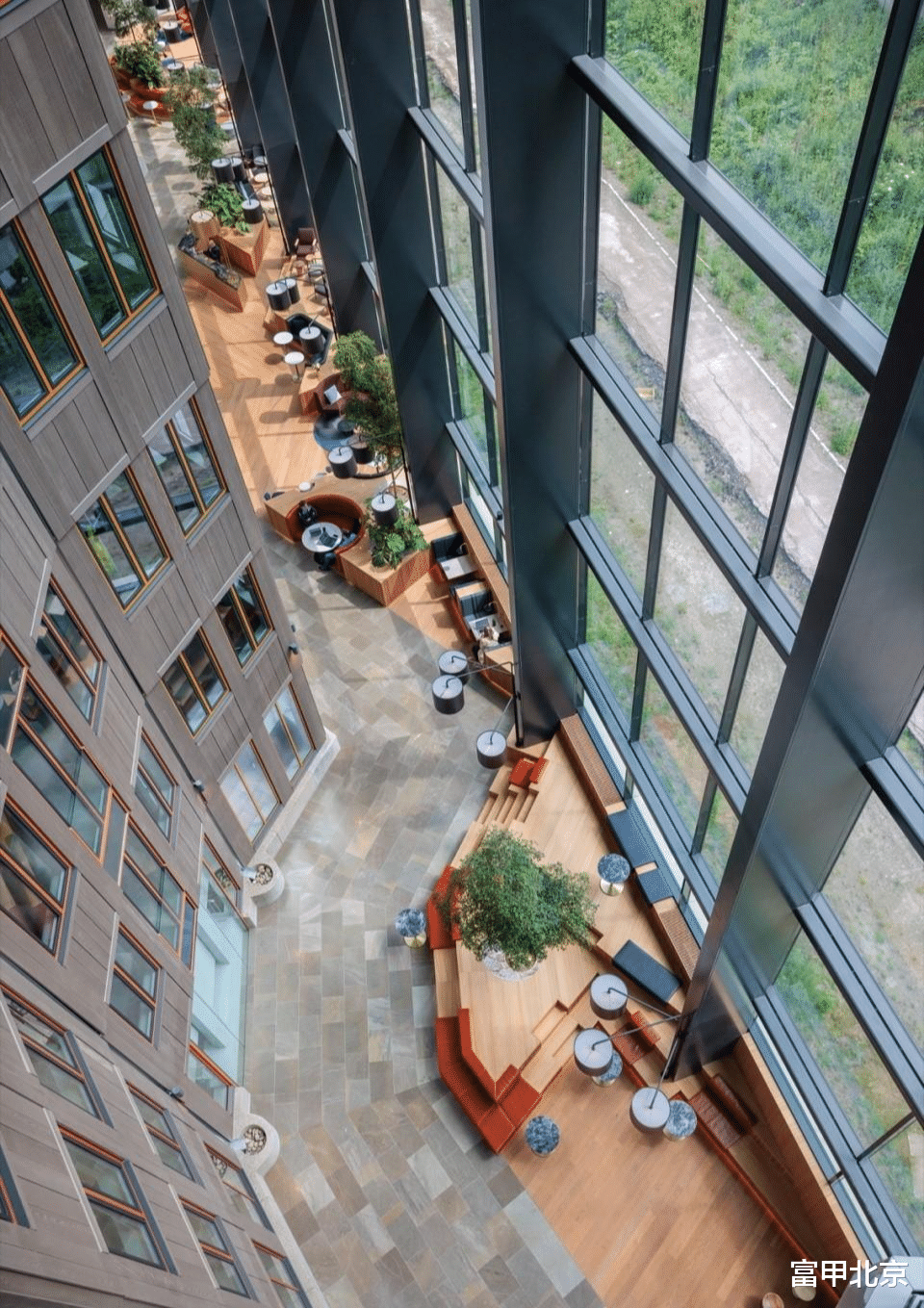
▼绿植与家具引入了人性化尺度,greenery and furniture introduce a human dimension© wouter van der sar / concrete
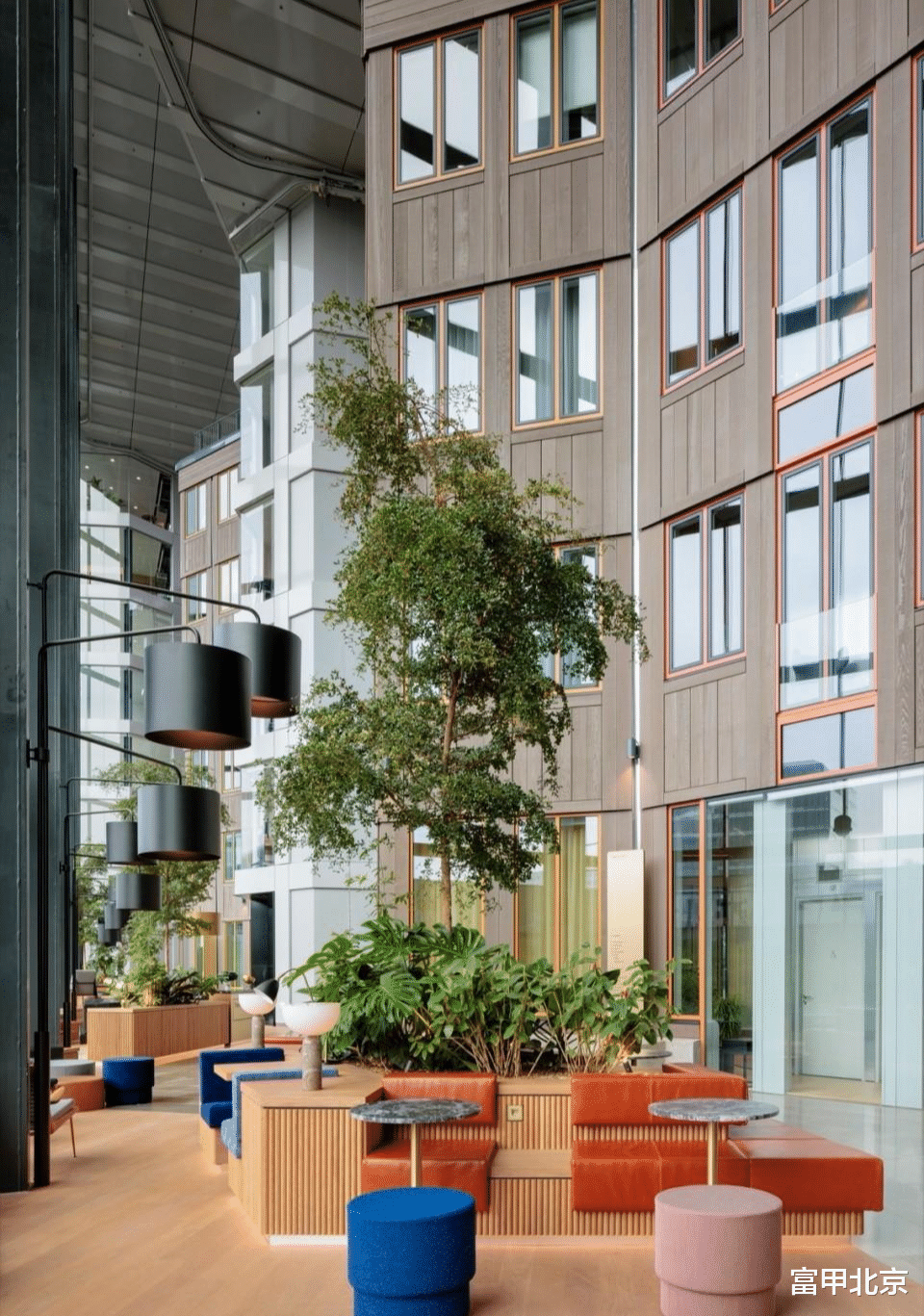
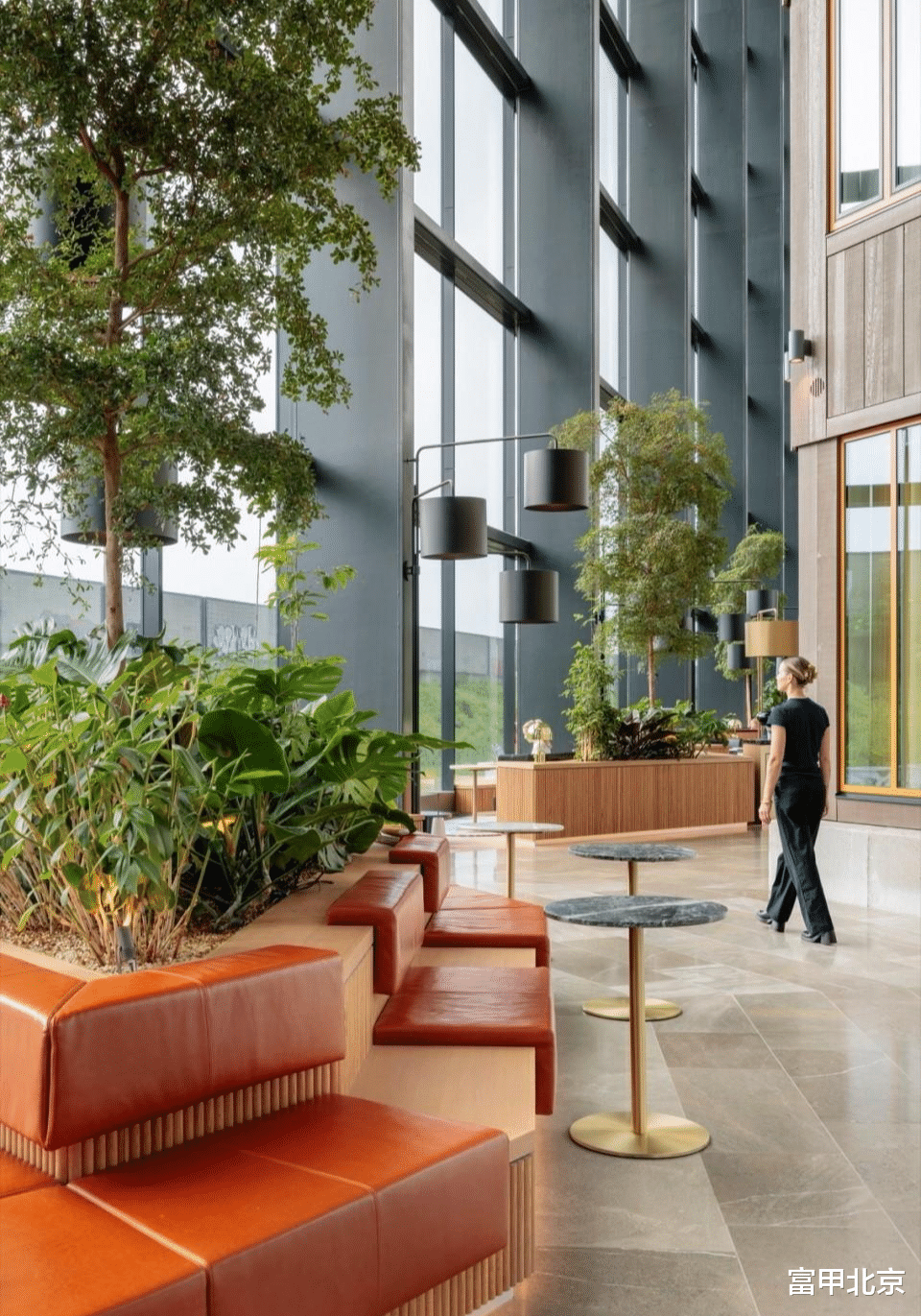
Concrete将这一挑战转化为设计优势,打造了一个沿着整个玻璃幕墙延伸的木制景观,提供了停留、工作、等候和会面的空间。该大型木制室内景观的设计灵感受周围建筑的启发。
Concrete used this challenge to the advantage of the design, by designing a wooden landscape for the public lobby. Stretching along the full length of the façade, offering places to dwell, work, wait and meet. This large wooden landscape is shaped by its architectural surroundings.
▼木制室内景观中的座位,the seating area in the wooden landscape© wouter van der sar / concrete

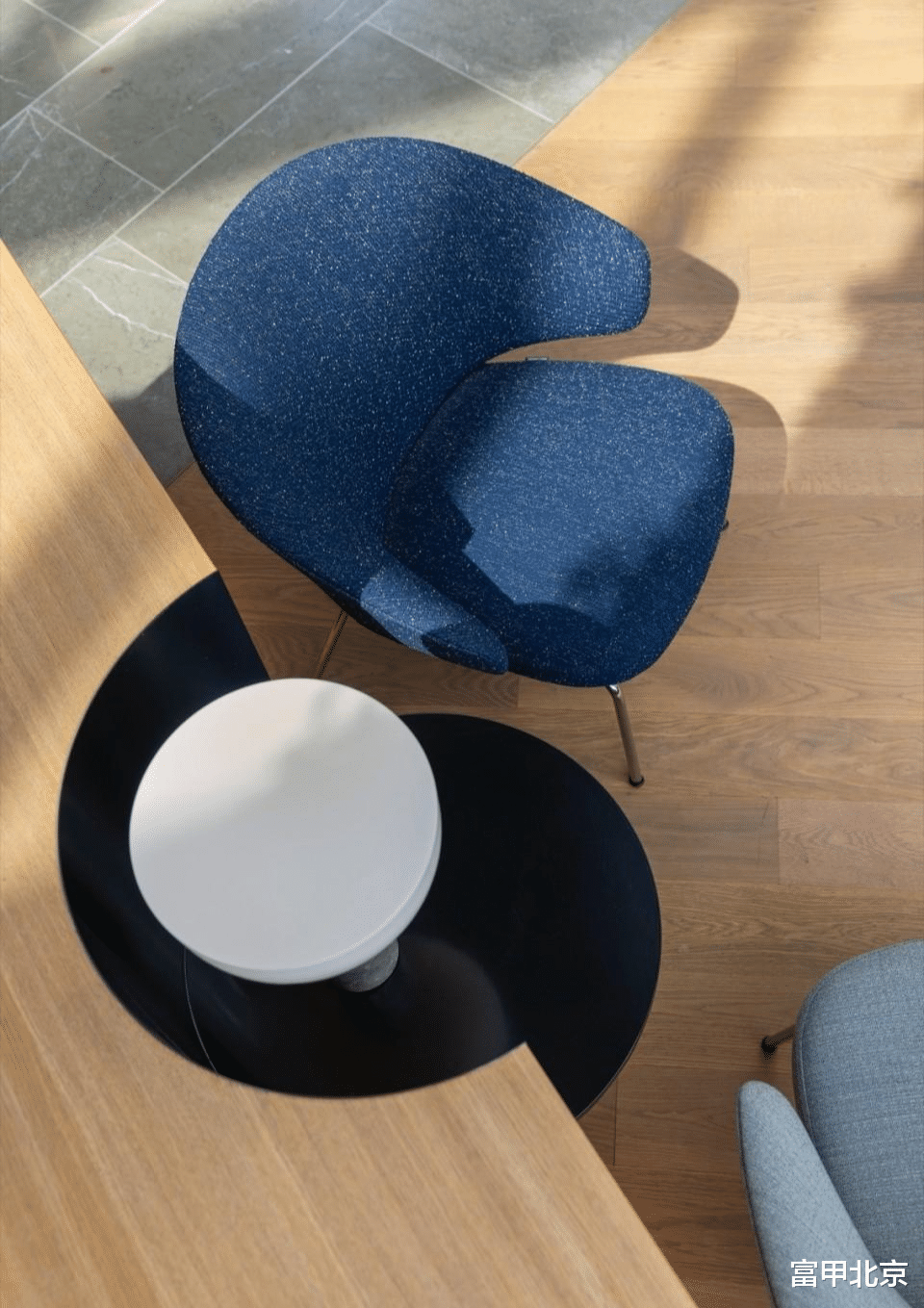
▼接待台细部,details of the reception desk© wouter van der sar / concrete
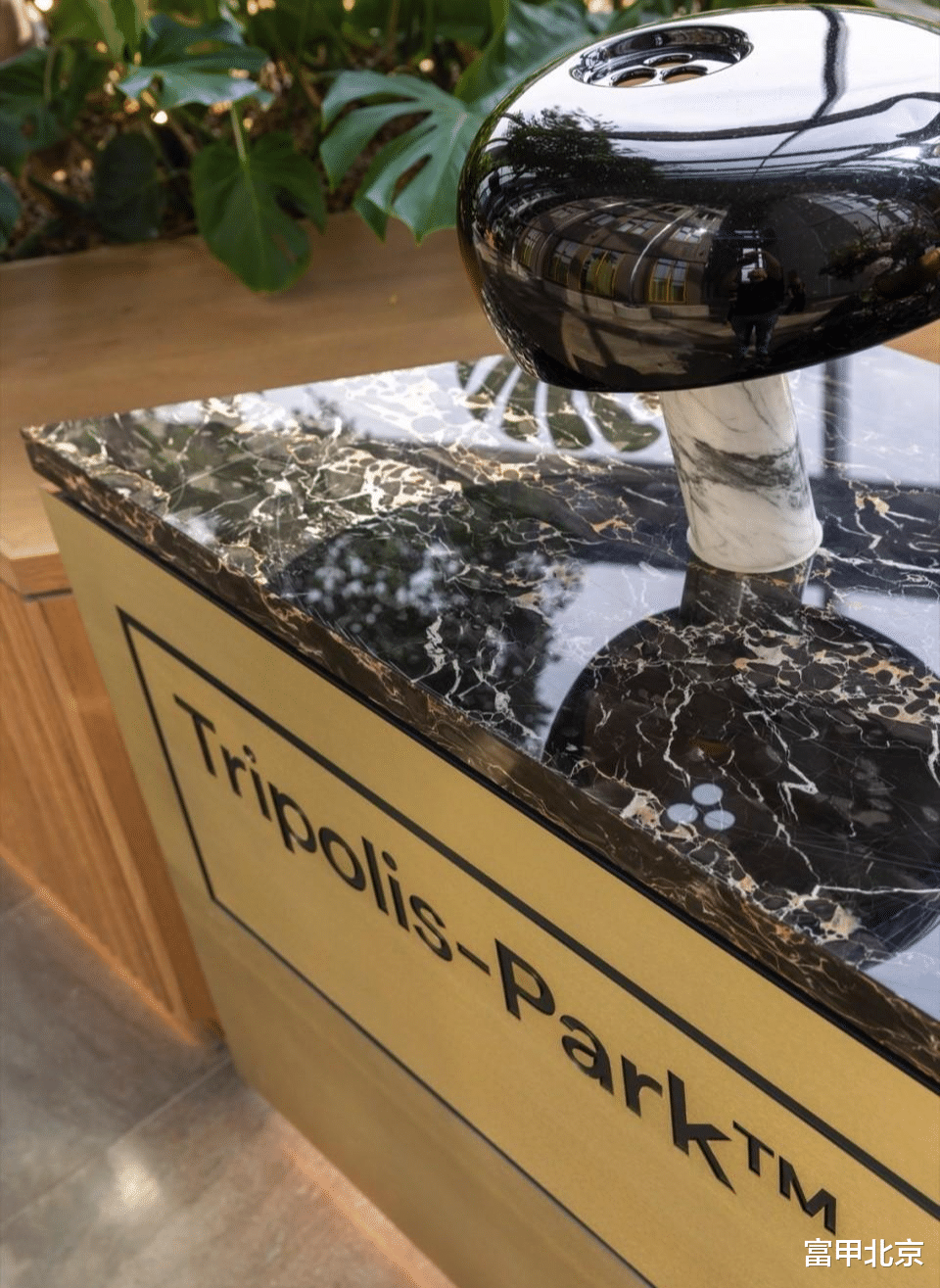
▼细部,details© wouter van der sar / concrete
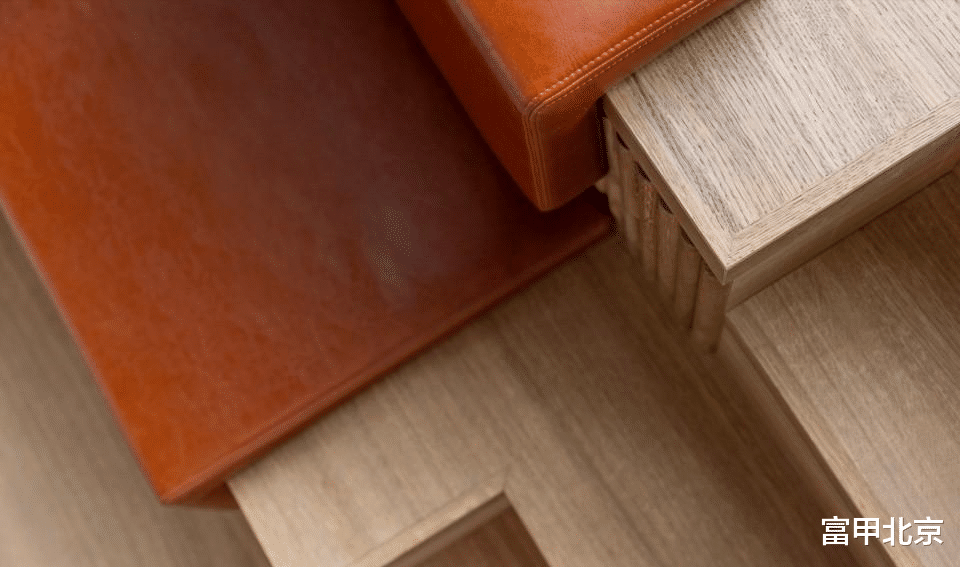
木制块体经过精心的“雕刻”,形成了各种座位配置,以满足不同用户的需求。除了富有活力的形态和亲密的座位安排外,Concrete还在这一景观中加入了四棵大树,进一步增强了人性尺度,减缓了中庭巨大的高度带来的冲击。在中庭的两端,Concrete利用地景建筑底座的两个隐藏壁龛,创造了隐秘的工作空间,供那些寻求隐私的人使用。
Concrete carefully carved a big variety of seating configurations out of the wooden block to serve the various needs of users. Alongside the vibrant terrain and its intimate seating arrangements, Concrete added four large trees on the landscape to further enhance the human scale and break the immense height of the atrium. On the far ends of the atrium Concrete used two hidden niches in the plinth of the landscaper to create very secluded workspaces for those who seek privacy.
▼具有私密性的工作空间,secluded workspaces© wouter van der sar / concrete
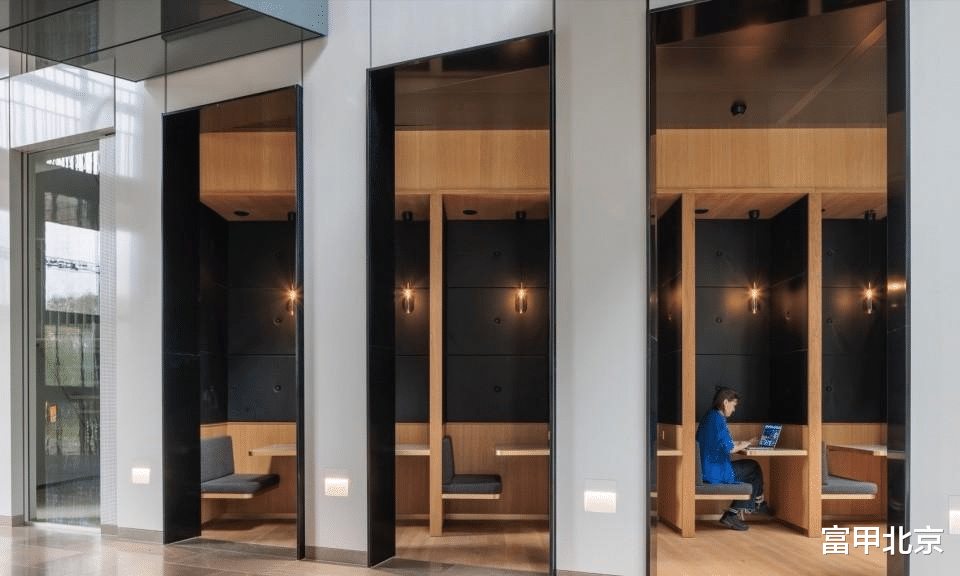
镜面立面:激发模拟交流Mirrored Elevation: Stimulating Analogue Communication
由Concrete设计的中央电梯厅呈现出与中庭温暖的木制景观及其有机形状形成对比的棱角分明的造型。虽然电梯厅十分宽敞,但天花板高度较低。为此,Concrete在墙面和天花板上设置了斜角镜面,通过反射影像营造出双倍高度的错觉。
The angular shaped central lift lobby, designed by Concrete, is a contrast to the warm wooden landscape and its organic shapes in the atrium. The lift lobby, though wide, has a relatively low ceiling. To counter this, Concrete lined the walls and ceiling with angled mirrors, creating the illusion of double height through reflected images.
▼电梯厅,elevator hall© wouter van der sar / concrete
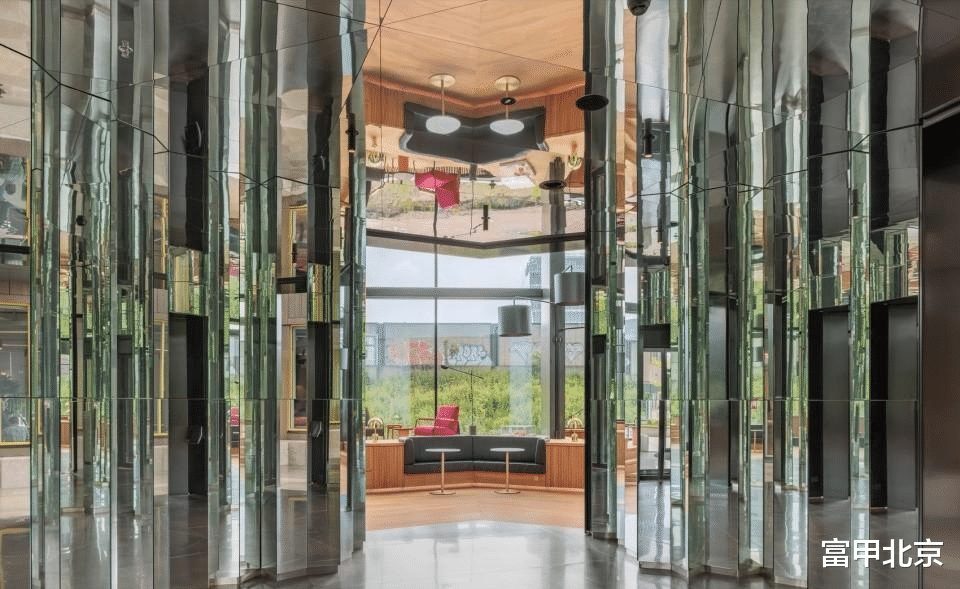
▼平面图,Plan© wouter van der sar / concrete
